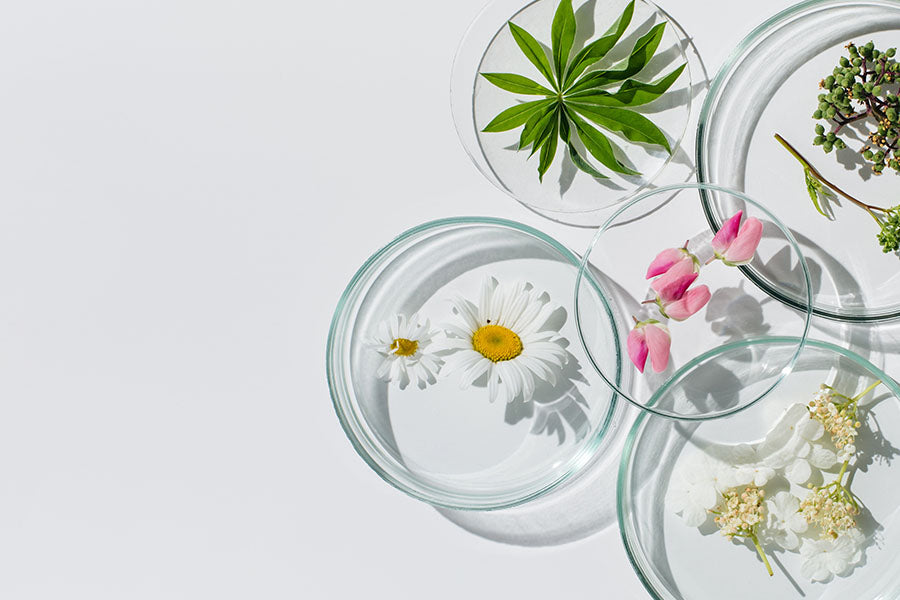What Skincare Ingredients Not to Mix

The skincare world is filled with powerful ingredients that promise clearer, brighter, and more youthful skin. However, while these ingredients can work wonders individually, combining the wrong ones can cause irritation, reduce effectiveness, or even damage your skin. Knowing what skincare ingredients not to mix is crucial for maintaining a healthy, glowing complexion.
In this guide, we’ll explain the common ingredient combinations to avoid, along with helpful tips for getting the most out of your skincare routine.
Why Mixing Certain Ingredients Can Be Harmful
Skincare products often contain active ingredients designed to target specific skin concerns, such as acne, aging, and hyperpigmentation. But combining ingredients that don’t work well together can overstimulate your skin, leading to redness, peeling, and breakouts. Some ingredients also cancel each other out, rendering them ineffective.
Ingredients You Shouldn't Mix
Here’s a breakdown of common skincare ingredients that don’t play well together and why:
1. Retinol and Vitamin C
- Why Not to Mix: Both retinol and vitamin C are powerful anti-aging ingredients, but they work best at different pH levels. Retinol requires a higher pH to be effective, while vitamin C needs a lower pH for proper absorption.
- Tip: Use them at different times of day. Apply vitamin C in the morning to protect your skin from environmental stress, and use retinol at night to promote cell turnover and skin renewal.
2. Retinol and AHAs/BHAs (Acids)
- Why Not to Mix: Retinol promotes cell turnover, while AHAs (Alpha Hydroxy Acids) and BHAs (Beta Hydroxy Acids) exfoliate the skin. Combined, they can overstimulate your skin, causing irritation, redness, and sensitivity.
- Tip: Alternate between these products on different nights or days to give your skin a break and avoid over-exfoliation.
3. Vitamin C and Niacinamide
- Why Not to Mix: Vitamin C is an antioxidant that brightens the skin, while niacinamide helps with hydration and calming inflammation. However, using them together can reduce the effectiveness of vitamin C.
- Tip: Use vitamin C in the morning and niacinamide at night for the best results.
4. Benzoyl Peroxide and Retinol
- Why Not to Mix: Both benzoyl peroxide (used for acne) and retinol (used for anti-aging) are drying agents. When combined, they can cause excessive dryness, peeling, and irritation.
- Tip: Use benzoyl peroxide in the morning to treat acne and retinol at night to repair and renew your skin.
The Risk of Too Many Actives
Using too many active ingredients at once can overwhelm your skin. Here’s why you should limit the number of active ingredients in your routine:
- Increased Irritation: Combining too many actives—like retinol, vitamin C, and acids—can lead to redness, peeling, and increased sensitivity.
- Weakened Skin Barrier: Overusing potent ingredients can weaken your skin’s protective barrier, leading to dryness, irritation, and breakouts.
- Diminished Results: You may not see the expected results when using too many actives because they could cancel each other out.
What Not to Do with Skincare Ingredients
- Don’t Over-Exfoliate: Using multiple exfoliating products, such as AHAs, BHAs, and retinoids, can damage the skin. Limit exfoliation to a few times a week and avoid combining exfoliants in one routine.
- Don’t Skip Sunscreen: Many active ingredients, such as retinol and AHAs, increase skin sensitivity to the sun. Always apply a broad-spectrum sunscreen during the day to protect your skin from UV damage.
- Don’t Layer Too Many Actives: To avoid overstressing your skin, stick to a maximum of two active ingredients per routine. For example, using a retinol serum and a hydrating niacinamide product can balance out your routine without causing irritation.
Tips for Safely Combining Skincare Ingredients
- Alternate Days: Use stronger ingredients like retinol, vitamin C, or AHAs on different days instead of layering them in the same routine.
- Start Slowly: If introducing a new active ingredient, start slowly to let your skin adjust. This will help you avoid irritation.
- Pair Actives with Hydrators: To reduce irritation, pair active ingredients like retinol or acids with gentle hydrating products like hyaluronic acid or ceramides.
- Test New Products: Always patch-test new skincare products before adding them to your routine to ensure they don’t cause a reaction.
Understanding what skincare ingredients not to mix is essential for maintaining a healthy, radiant complexion. By avoiding harsh ingredient combinations and limiting the number of actives you use at one time, you can prevent irritation and keep your skin barrier strong.
Whether using products with retinol, vitamin C, or AHAs, remember to build your routine carefully, give your skin time to adjust, and prioritize hydration and protection.




